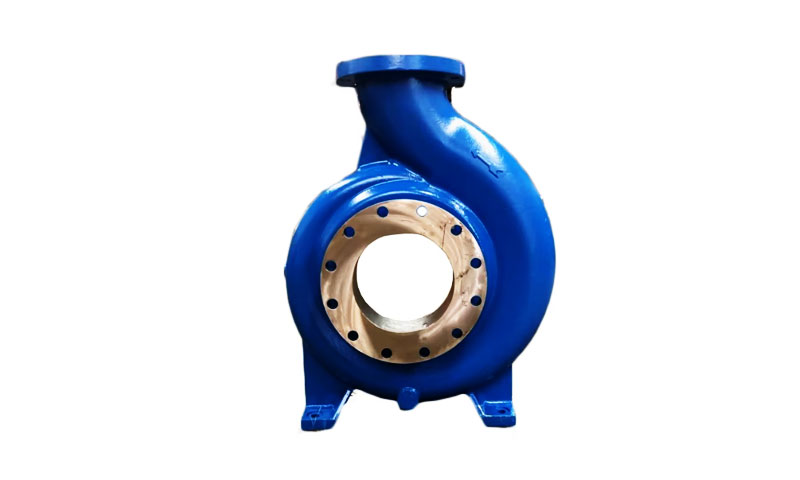1. Uvod
Pump bodies are structural and hydraulic housings that convert driver energy into fluid motion. They commonly contain volutes, impeller seats, bearing bosses, flanges and internal passages.
The manufacturing route chosen for a pump body sets achievable geometry, metalurgija, cost and lead time.
Investment casting stands out where geometry is complex (internal guide vanes, thin webs, integrated bosses), tolerances are tight, and high-integrity alloys (nehrđajući čelici, legure nikla, bronze) su potrebni.
2. What Is an Investment Casting Pump Body?
Definition and core functionality
An casting pump body is a pump housing produced by the lost-wax (ulaganje) metoda lijevanja.
A wax (ili polimer) pattern of the pump body is created, coated in refractory ceramic to build a shell, the wax removed by heating, and molten metal poured into the ceramic mold.
The fired shell is broken away after solidification to reveal a near-net cast pump body that is subsequently finished and inspected.
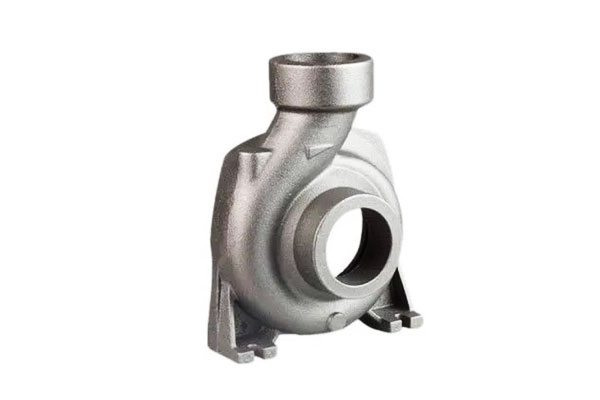
Typical specifications and dimensions
- Part mass: investment cast pump bodies usually range from a few hundred grams to tens of kilograms per piece; many foundries routinely cast pump bodies from ~0.5 kg up to ~50–100 kg depending on plant capability.
- Debljina zida: typical nominal walls for stainless or nickel alloys: 3–12 mm; minimum thin sections down to 1–2 mm are achievable in selected alloys and process control.
- Dimenzijska tolerancija (lijevan): general investment cast tolerances commonly fall in ± 0,1–0,5 mm for small features; percent-based tolerance of ±0.25–0.5% linear is a practical rule of thumb.
Critical machined features are usually left with machining allowance (0.2–2.0 mm depending on casting accuracy). - Površinski završetak (lijevan): typical Ra 1.6–3,2 µm (50–125 min) for standard ceramic shells; fine shells and careful pouring can produce Ra ≈ 0.8–1.6 μm.
Sealing faces or bearing journals are machined/lapped to much finer Ra (≤ 0.2 µm) as required.
3. Razmatranja dizajna
Investment casting enables complex geometry, but good design practice maximizes quality and minimizes cost.
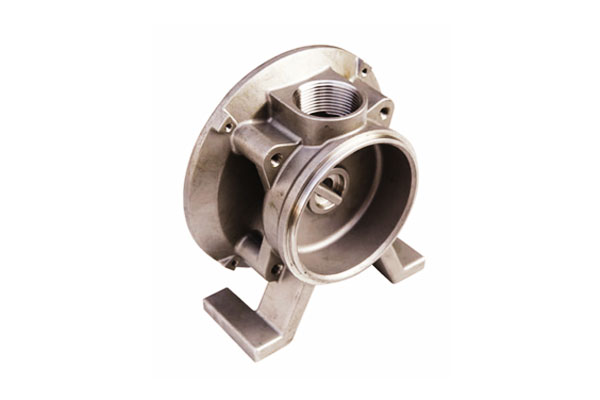
Hydraulic performance requirements
- Flow passages & volutes: smooth fillets and controlled convergence avoid separation and cavitation.
Internal fillet radii should be generous (≥ 1–2× wall thickness) to reduce turbulence. - Impeller seat alignment: concentricity and perpendicularity are critical — plan for machined bores and datum features.
- Clearances: pump clearances at impeller overhangs and seal faces must be maintainable by post-cast machining.
Structural requirements
- Stress & umor: consider cyclical loads; use finite-element analysis to identify local stress risers.
Cast metallurgy (Veličina zrna, segregacija) affects fatigue life—design to avoid thin, highly stressed bosses without proper filleting. - Vibration: stiff webs and ribs help raise natural frequencies; investment casting allows ribs to be integrated into the body.
Korozija & nositi
- Odabir materijala: choose alloy based on fluid chemistry (pH, kloridi, erozivne čestice, temperatura).
For seawater, duplex or cupronickel may be required; for acids, Hastelloy or appropriate nickel alloys. - Erosion resistance: smooth internal surfaces and sacrificial coatings (tvrdoglav, toplinski sprej) are options where particulate slurry is present.
Tolerancije dimenzija & površinski završetak
- Kritične značajke: designate which faces/bores are finish-machined and specify machining allowances (Npr., 0.5–1.5 mm for sandier shells, 0.2–0.6 mm for precision shells).
- Sealing surfaces: specify Ra and flatness; often lapped/polished to Ra ≤ 0.2 μm and flatness within 0.01–0,05 mm depending on pressure class.
4. Materials for Investment Casting Pump Bodies
Material selection is a critical factor in designing and producing investment-cast pump bodies, as it directly affects mechanical performance, otpor korozije, proizvodnja, i služiti život.
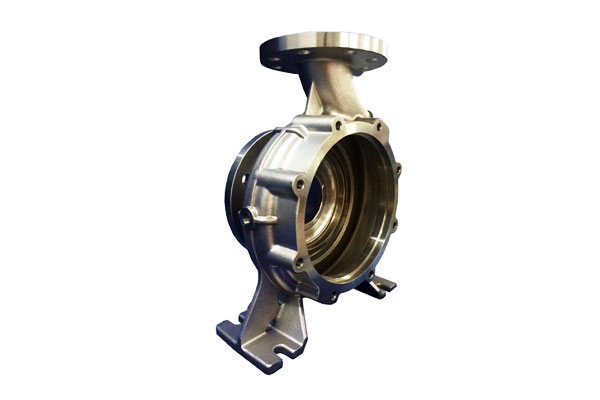
| Materijalna kategorija | Primjeri legure | Ključna svojstva | Tipične primjene | Razmatranja kastinga |
| Austenitski Nehrđajući čelik | 304, 316L | Izvrsna otpornost na koroziju, umjerena snaga, Dobra zavarivost; Zatezanje: 480–620 MPa, Prinos: 170–300 MPa, Produženje: 40–60% | General chemical pumps, obrada vode, hrana & piće | Good molten fluidity, low hot-cracking risk, easy post-machining |
| Dupleks nehrđajući čelik | 2205, 2507 | Visoka snaga (Yield 450–550 MPa), superior chloride stress corrosion resistance | Marine and offshore pumps, aggressive chemical environments | Requires controlled temperature; post-casting heat treatment to prevent sigma phase |
Legure nikla |
Udruživanje 625, 718; Hastelloj | Izuzetna otpornost na koroziju, Snaga visoke temperature, otpornost na oksidaciju | Kemijska obrada, stvaranje energije, ulje & plin | High melting points (≈1450–1600 °C); careful mold preheating and controlled pouring needed; difficult machining |
| Bronza and Copper Alloys | C93200, C95400 | Izvrsna otpornost na koroziju morske vode, Dobra otpornost na habanje, antifouling; lower mechanical strength | Morske pumpe, Hlađenje morske vode, hidrauličke komponente | Lower melting points (≈1050–1150 °C) simplify casting; low thermal cracking risk; mechanical strength lower than stainless/nickel |
5. Investment Casting Process for Pump Bodies
Investicijski lijev, Poznat i kao Izgubljeni vosak, enables the production of pump bodies with complex geometries, tanki zidovi, i visoku dimenzionalnu točnost.
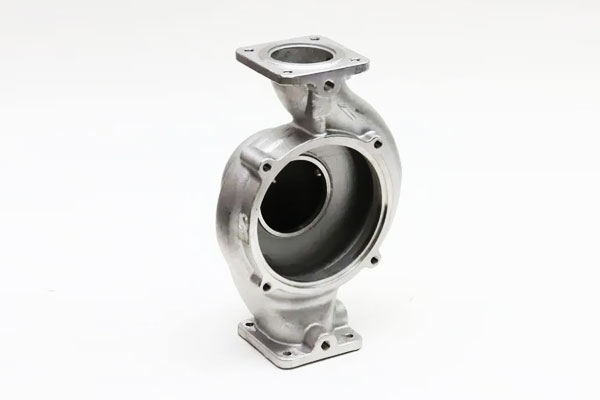
The process consists of several critical steps:
| Korak | Opis | Ključna razmatranja |
| 1. Stvaranje voštanog uzorka | Molten wax is injected into precision molds to form replicas of the pump body. | Ensure uniform wall thickness; maintain dimensional accuracy ±0.1 mm; use high-quality wax to prevent distortion. |
| 2. Assembly of Wax Tree | Individual wax patterns are attached to a central wax sprue to form a tree for batch casting. | Sprue design affects metal flow; minimize turbulence during pouring. |
| 3. Zgrada keramičke školjke | Repeated dipping in ceramic slurry and stuccoing with fine refractory sand creates a strong, ljuska otporna na toplinu. | Target shell thickness (5–10 mm) depends on pump body size; avoid cracks and porosity in the shell. |
| 4. Dewaxing and Mold Firing | Wax is melted out (autoclave or kiln), ostavljajući šupljinu; the ceramic shell is then fired to remove residues and strengthen the mold. | Temperature ramping must be controlled to prevent shell cracking; residual wax must be fully removed. |
5. Izlijevanje metala |
Rastaljeni metal (nehrđajući čelik, nickel alloy, Ili bronza) is poured into the preheated ceramic mold under gravity or vacuum-assisted conditions. | Pouring temperature and rate must ensure complete filling; control turbulence and prevent oxide formation. |
| 6. Učvršćivanje i hlađenje | Metal solidifies inside the mold; cooling rates affect microstructure, mehanička svojstva, i zaostali stres. | Thick sections may require controlled cooling to prevent porosity; thin walls must avoid hot tearing. |
| 7. Uklanjanje školjki | Ceramic shell is broken away mechanically, often using vibration, sand blasting, or chemical dissolution. | Avoid damaging intricate pump channels or flanges. |
| 8. Finishing and Cleaning | Residual ceramic, gating system, and surface imperfections are removed via grinding, pucanj, or chemical cleaning. | Maintain dimensional tolerances; prepare surfaces for subsequent machining or coating. |
6. Operacije nakon lijevanja
After the pump body is removed from the ceramic shell, several post-casting operations are performed to ensure the component meets functional, dimenzionalan, i zahtjevi za površinskom kvalitetom.
These operations are critical for high-performance applications in chemical, morski, i industrijski sektori.
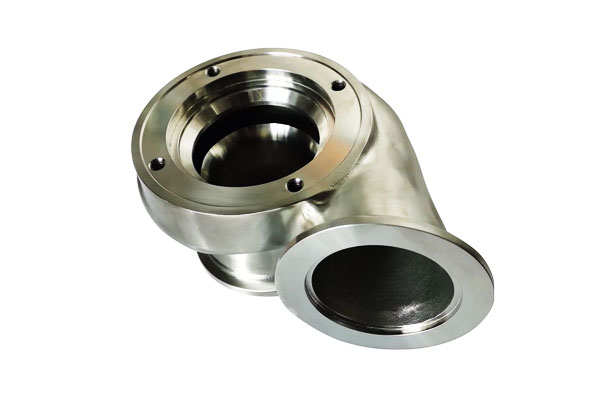
Toplotna obrada
Toplotna obrada is applied to relieve residual stresses, Poboljšajte duktilnost, and optimize mechanical properties:
- Žarište stresa: Heating to 550–650 °C for stainless steels reduces residual stress from casting and prevents distortion during machining.
- Otopina: Applied for stainless steels and nickel alloys to homogenize microstructure and dissolve unwanted precipitates, ensuring corrosion resistance and consistent hardness.
- Aging or Precipitation Hardening (for certain alloys): Enhances strength and wear resistance in high-performance materials.
Obrada
Critical dimensions such as flanges, probir, mating surfaces, and threaded ports are machined to meet tight tolerances.
Typical machining operations include turning, mljevenje, bušenje, and boring. Machining ensures:
- Dimensional tolerances of ±0.05–0.1 mm for precise assembly.
- Smooth sealing surfaces to prevent leaks in high-pressure applications.
Površinska obrada
Završnica površine Poboljšava otpornost na koroziju, nositi otpor, i estetika:
- Poliranje: Improves smoothness for sealing faces and internal channels.
- Pucanj: Removes residual ceramic particles and creates a uniform surface for coating or painting.
- Premaz: Optional chemical or electroplated coatings (Npr., nikla, PTFE) enhance corrosion resistance and reduce friction.
Nerazorna ispitivanja (NDT)
To detect defects such as porosity, pukotine, ili inkluzije, NDT is performed:
- Radiografija (Rendgenski): Identifies internal voids and inclusions.
- Ultrazvučno testiranje (UT): Detects subsurface flaws in thick sections.
- Testiranje penetranta boje (PT): Reveals surface cracks and porosity.
Cleaning and Inspection
Konačno, pump bodies are cleaned to remove residual machining oils, Krhotine, or salts. Dimensional and visual inspections verify compliance with specifications before assembly or shipment.
7. Quality Assurance and Testing
Osiguranje kvalitete (QA) is critical in ensuring that investment casting pump bodies meet design specifications, performance standards, i industrijski zahtjevi.
A systematic QA approach combines dimensional checks, mehaničko ispitivanje, and non-destructive evaluation to detect defects and confirm functional integrity.
Dimenzionalni pregled
Dimensional verification ensures that the pump body conforms to design drawings and tolerances:
- Koordinirajte mjerne strojeve (Cmm): Measure complex geometries, probir, prirubnice, and mounting surfaces with accuracy of ±0.01–0.05 mm.
- Gauge Tools: Thread gauges, plug gauges, and height gauges verify critical features quickly in production.
- Mjerenje površinske hrapavosti: Confirms finishing requirements for sealing faces and internal channels (Npr., Ra ≤0.8 μm for hydraulic components).
Mechanical Property Verification
Mechanical testing validates that the material meets required strength, duktilnost, i tvrdoća:
- Testiranje zatezanja: Measures yield strength, krajnja zatezna čvrstoća, i izduženje, ensuring the material can withstand operational loads.
- Testiranje tvrdoće: Rockwell or Vickers testing confirms that heat treatment and material processing achieved the desired hardness.
- Testiranje utjecaja (Ako je potrebno): Evaluates toughness for applications exposed to fluctuating loads or shock.
Nerazorna ispitivanja (NDT)
NDT techniques detect hidden defects without damaging the part:
- Radiografija (X-ray/CT Scanning): Identifies internal porosity, inkluzije, and voids, particularly in thick sections.
- Ultrazvučno testiranje (UT): Detects internal cracks, praznine, or delaminations in dense materials like stainless steel and nickel alloys.
- Testiranje penetranta boje (PT): Reveals surface cracks, rupice, or fine porosity not visible to the naked eye.
- Ispitivanje magnetskih čestica (Planinar): Applied for ferromagnetic alloys to detect surface and near-surface discontinuities.
Common Casting Defects and Mitigation Strategies
- Poroznost: Minimized through proper gating, odzračivanje, and controlled solidification rates.
- Šupljine: Addressed via riser design and thermal management.
- Hladno se isključuje i zabludi: Avoided by maintaining optimal pouring temperatures and smooth flow in complex geometries.
- Surface Inclusions: Controlled by using high-purity alloys and proper degassing techniques.
8. Advantages of Investment Casting for Pump Bodies
- Složena geometrija: Unutarnji odlomci, thin walls and integrated bosses with minimal secondary assembly.
- Blizu mreže: reduces material removal vs. rough machining from bar or billet — often 30–70% less machining for complex parts.
- Točnost visoke dimenzije & površinski završetak: less secondary finishing for many features compared with sand casting.
- Alloy flexibility: cast many stainless and nickel alloys with good metallurgical integrity.
- Small to medium production flexibility: tooling for wax patterns is relatively inexpensive vs. large die tooling, enabling economic runs from prototypes to thousands of parts.
9. Ograničenja i izazovi
- Cost for very large parts: above certain sizes (često >100 kg) investment casting becomes uneconomical compared with sand casting or fabricating/ welding.
- Vrijeme olova: pattern tooling, shell building and firing add lead time—prototype timelines usually measured in weeks.
- Porosity risk in thick sections: thick bosses or large cross-sections require careful gating, chills or segmenting to avoid shrinkage.
- Surface finish and tolerances depend on shell system: achieving ultra-fine finishes or extremely tight as-cast tolerances requires premium ceramic systems and process control.
10. Industrijska primjena
Investment casting pump bodies are used across a broad spectrum of industries due to their complex geometry capabilities, Materijalna svestranost, i visoku dimenzionalnu točnost.
The process allows engineers to design optimized hydraulic passages, tanki zidovi, and integrated mounting features that improve pump efficiency and longevity.
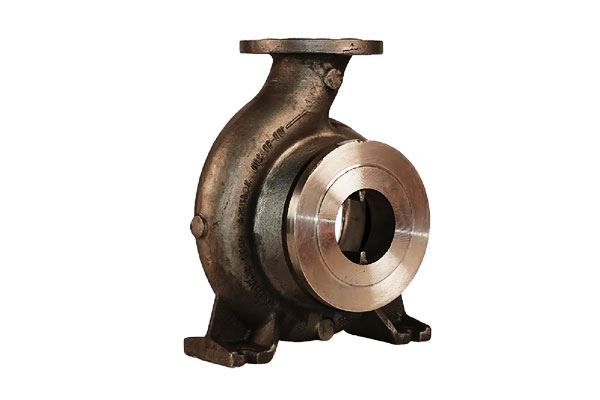
Chemical Processing Pumps
- Okoliš: Corrosive fluids such as acids, caustics, i otapala.
- Materials Used: Nehrđajući čelici (316L, dupleks) and nickel alloys (Hastelloj, Udruživanje).
- Obrazloženje: Investment casting enables intricate internal channels, minimizing turbulence and ensuring uniform flow, critical for chemical process reliability.
Water and Wastewater Pumps
- Okoliš: High-volume pumping, abrasive suspended solids, and variable pH levels.
- Materials Used: Bronza, Dupleks nehrđajući čelik, and corrosion-resistant cast irons.
- Obrazloženje: Thin-wall, smooth internal passages reduce clogging and energy losses, improving efficiency in municipal and industrial water systems.
Marine and Offshore Pumps
- Okoliš: Saltwater exposure, high-pressure operation, and cyclical mechanical stress.
- Materials Used: Bakrene legure (mornarički mesing, bronca), Dupleks nehrđajući čelici.
- Obrazloženje: Resistance to corrosion and biofouling is critical; investment casting allows seamless, complex geometries to reduce maintenance and improve service life.
Ulje & Gas and Power Generation Pumps
- Okoliš: Visokotemperatura, high-pressure fluids, and hydrocarbon-based media.
- Materials Used: High-nickel alloys (Udruživanje, Hastelloj), nehrđajući čelik, and cobalt-based alloys.
- Obrazloženje: Investment casting supports high-strength materials and precise tolerances necessary for critical applications such as turbine lubrication, chemical injection, and offshore drilling.
Specialty and Custom Pumps
- Okoliš: Laboratory, farmaceutski, or food processing applications requiring hygienic and precision performance.
- Materials Used: Nehrđajući čelik (304, 316L), titanijum, ili legure nikla.
- Obrazloženje: Glatke površine, uske tolerancije, and complex geometries achieved by investment casting ensure minimal contamination risk and compliance with regulatory standards.
11. Komparativna analiza
| Značajka / Kriterij | Investicijski lijev | Lijevanje pijeska | Machining from Solid |
| Geometrijska složenost | Excellent – thin walls, Unutarnji kanali, intricate features achievable | Moderate – limited by core placement and mold stability | Limited – complex internal geometries often impossible without assembly |
| Točnost dimenzije | High – ±0.1–0.25 mm typical | Moderate – ±0.5–1.0 mm | Very High – ±0.05 mm achievable |
| Površinska obrada (Ram) | Fine – 1.6–3.2 μm typical; can be polished | Rough – 6–12 μm; requires machining for precision | Excellent – 0.8–1.6 μm achievable with finishing |
| Opcije materijala | Wide – stainless steels, legure nikla, bronca, bakrene legure | Wide – iron, čelik, bronca, aluminij | Wide – depends on machinable stock availability |
| Veličina šarže | Low-to-medium – 1–1000+ parts | Medium-to-high – economical for large, Jednostavni dijelovi | Low – material waste increases cost for large parts |
| Vrijeme olova | Moderate – wax pattern & shell building required | Short-to-moderate – mold preparation relatively quick | Variable – depends on machining complexity |
Materijalni otpad |
Low – near-net shape reduces scrap | Moderate – gating and risers generate some waste | High – subtractive process creates chips and offcuts |
| Trošak po dijelu | Moderate-to-high – tooling and process steps increase cost, economical for complex parts | Low-to-moderate – simpler molds, larger parts cheaper | High – extensive machining on large, complex parts is expensive |
| Jačina & Integritet | Excellent – dense microstructure, minimal porosity if controlled | Moderate – risk of sand-related inclusions and porosity | Excellent – homogeneous, Nema oštećenja lijevanja |
| Post-Processing Required | Often minimal – some machining, završnica | Usually significant – machining and finishing required | Minimal – final finishing for tight tolerances only |
| Tipične primjene | Pump bodies with thin walls, complex hydraulic channels, otpor korozije | Velik, simple pump housings or structural components | Custom or prototype pump bodies requiring extreme precision |
12. Zaključak
Investment casting pump body combines design freedom with metallurgical integrity, making them an excellent choice for many fluid-handling applications—especially where complex internal geometry, exotic alloys or tight tolerances are required.
Success depends on early design for casting, informed material selection, careful process control (ulijevanje, shelling, toplotna obrada), and robust QA/NDT programs.
For critical pump systems—marine, chemical or power generation—investment casting can deliver reliable, economical components when specified and executed correctly.
Česta pitanja
What maximum size of pump body can be investment cast?
Typical shop practice ranges up to ~50–100 kg per part, but the practical maximum depends on foundry capability and economics.
Very large pump bodies are more often produced by sand casting or fabricating/welding.
How much machining allowance should I design into an investment casting?
Dopustiti 0.2–2,0 mm depending on the criticality and shell precision. Specify tighter allowances only where the foundry guarantees precision shells.
Which material is best for seawater pump bodies?
Duplex stainless steels and selected copper-nickel alloys are common choices due to superior chloride pitting resistance and biofouling performance; final selection depends on temperature, velocity and erosion conditions.
What is the typical turnaround time for an investment-cast pump body?
Small production runs typically take 4–8 tjedana from pattern approval to finished parts; single prototypes can be faster with 3D-printed patterns but still require shell firing and melt schedules.
How do I specify acceptance criteria for porosity?
Use industry NDT standards (radiografija, Ct, UT) and define acceptance levels in percent porosity by volume or via reference images.
Critical pressure-retaining pump bodies often require porosity <0.5% by volume and radiographic acceptance per customer standard.
